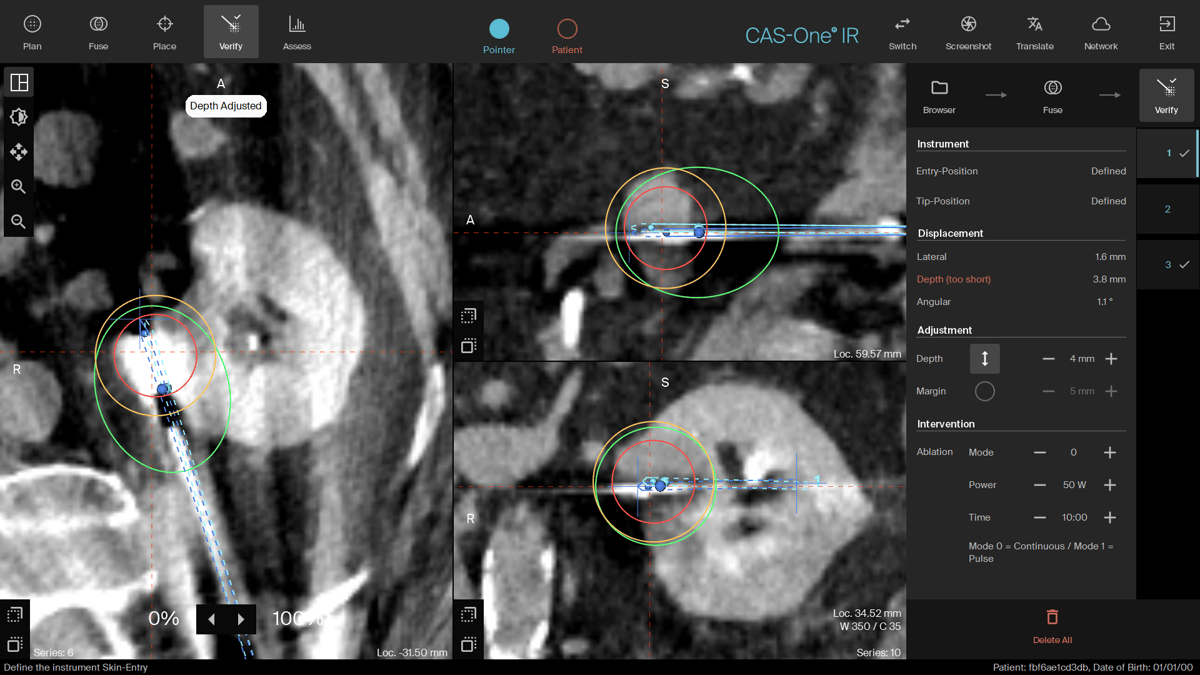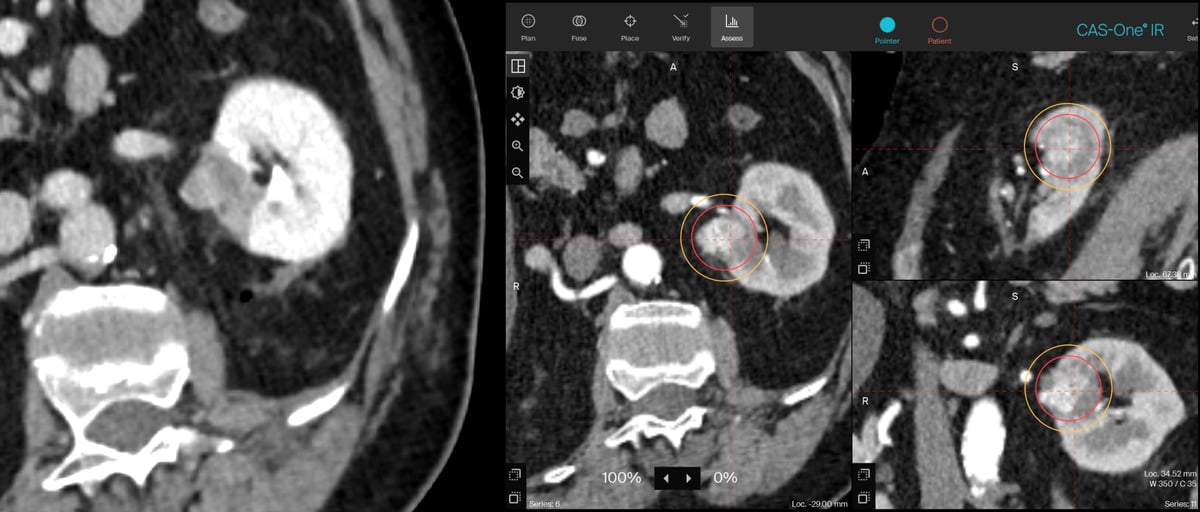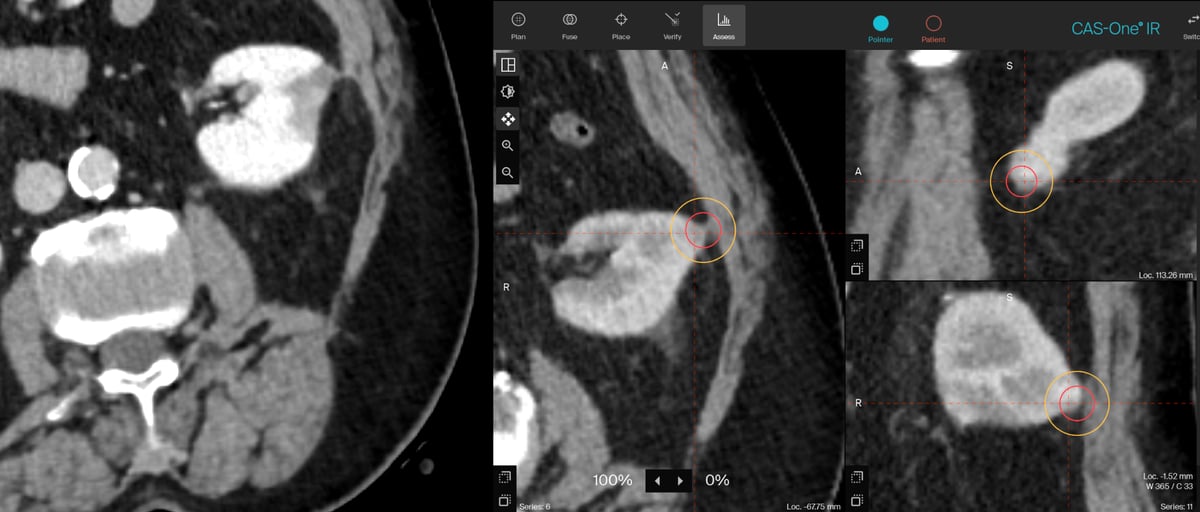Thursday, 25 January 2024
Two-probe MWA of RCC lesions in different locations
Two-probe MWA of RCC lesions in different locations
2:41
A 70-Year-old obese female patient diagnosed with cystic RCC in 2016 was treated with surgery. In 2023 a small local recurrence near the abdominal wall was detected and a new lesion near the renal hilum also appeared. The MDT decided for a CT- guided double microwave ablation assisted with CAS-One IR to ensure a quick, accurate procedure.
Planning scan with the 2 trajectories in MPR view

Needle verification image in MPR showing actual ablation zone with respect to needle position

Follow-up scan showing full treatment of the first lesion (left), compared to the planning scan (right)

Follow-up scan showing full treatment of the second lesion (left) compared to the planning scan (right)
Name: Dr. Ádám Zoltán Farkas
Institution: Semmelweis University, Budapest, Hungary
Patient sex: Female
Initial condition:
- Patient was initially diagnosed with a cystic Renal Cell Carcinoma on the left kidney in 2016.
- Patient underwent open surgery with a lumbotomy approach and was tumor-free until 2023.
- In January 2023, a follow-up MRI showed a small local recurrence of 15mm. A new lesion of 23.5 x 20.5mm was also detected near the hilum.
- The MDT decided for a double microwave ablation under CT guidance because of its difficult location and visibility due to the patient's obesity.
- CAS-One IR was chosen in this case because of the proximity of the second tumor to the hilum and renal artery which required precise planning and navigation.
Treatment:
- Both lesions were treated with MWA using the ECO system.
- The planning of CAS-One IR also enabled the physician to spare as much of healthy tissue as possible.
- CAS-One IR was chosen to ensure the maximum accuracy due to the challenging location of the new lesion.
- Complete ablation of the tumors and clinical margin was observed.
- The patient experienced no complications during the procedure and was released the next day.
Result:
- This difficult trajectory was safely planned and placed using CAS-One IR navigation capabilities, avoiding damage to the artery or ureter.
- Two months follow-up MRI showed complete treatment of the lesions and no local recurrence at both of the ablative sites.
- The physician was very pleased with the use of CAS-One IR in this challenging case due to the location of the lesion and the obesity of the patient which made ultrasound-guided ablation impossible. CAS-One IR ensured safety and ablation confirmation for a complete treatment.
Learn more about the stereotactic navigation system CAS-One IR.


